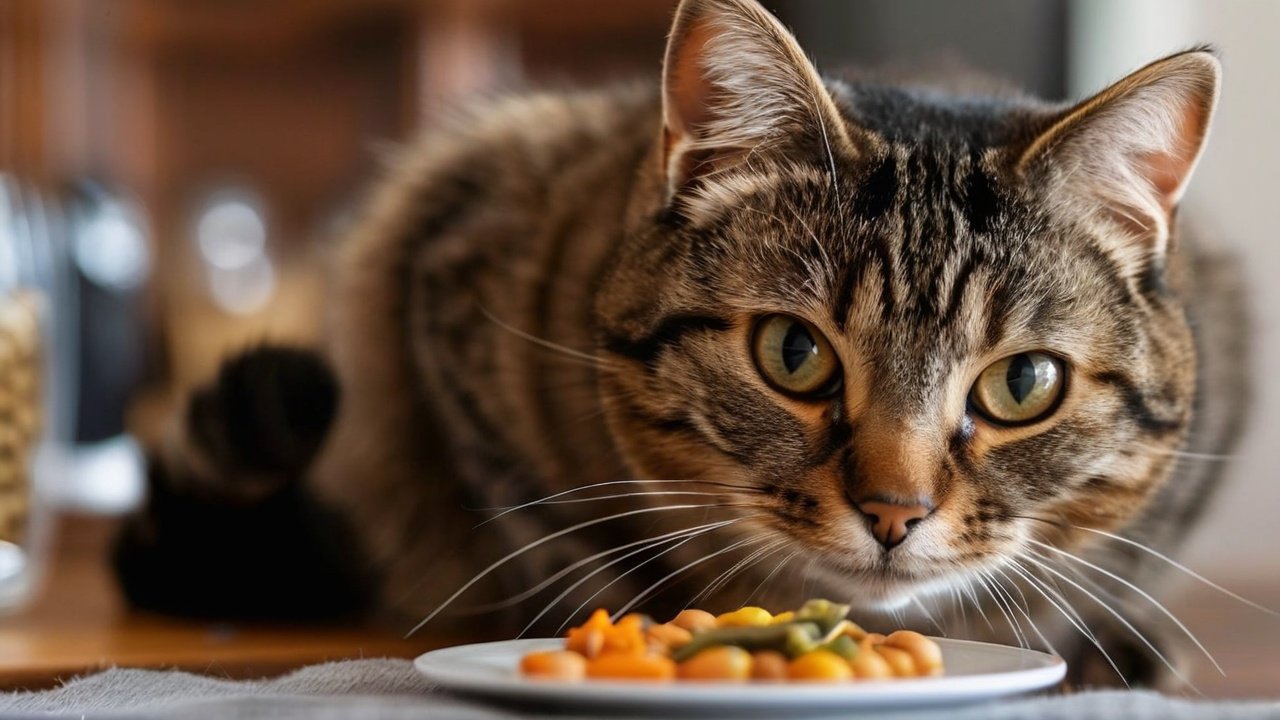Every cat owner wants to see their furry friend enjoying delicious meals and thriving with a healthy digestive system. But what happens when your cat starts experiencing digestive issues like vomiting, diarrhea, or constipation? It’s a situation that can leave you feeling helpless and worried, especially if you’ve tried various commercial cat foods with little success.
This is where the power of a bland diet comes in. While it might not sound appealing, a simple, easily digestible diet can be a lifesaver for your cat’s digestive system, offering relief from discomfort and promoting healthy bowel function.
Understanding Your Cat’s Digestive System
Cats are carnivores, meaning their digestive systems are designed to break down and absorb nutrients from meat-based foods. Their digestive tract is relatively short compared to other animals, and they have a specific set of enzymes that help them digest protein and fat efficiently.
A Case Study: Whiskers’ Digestive Woes
Whiskers, a 5-year-old Maine Coon, had a history of occasional digestive upset. His owner, David, describes Whiskers’ digestive problems as “a bit of a mystery.”
“Whiskers would sometimes vomit or have diarrhea,” David says. “We tried different cat foods, but nothing seemed to help. It was frustrating because he would seem perfectly fine otherwise.”
Why a Bland Diet?
A bland diet is often recommended for cats experiencing digestive issues because it:
- Reduces Inflammation: A bland diet contains fewer ingredients and avoids potential allergens or irritants that can trigger inflammation in the digestive tract. This can help soothe the stomach and intestines, reducing vomiting, diarrhea, and discomfort.
- Promotes Digestion: Bland foods are typically easier to digest, reducing the strain on the digestive system. This can help alleviate nausea and improve the absorption of nutrients.
- Helps Identify Allergens: A bland diet can help identify potential food allergies or sensitivities. By eliminating common allergens, like chicken, beef, and dairy, you can determine if your cat is having a reaction to a specific ingredient in their diet.
Creating a Bland Diet for Your Cat
A bland diet for cats typically consists of boiled chicken or turkey, and cooked rice or pasta. It’s important to ensure that the meat is boneless, skinless, and cooked thoroughly.
- Chicken and Rice: This is the most common bland diet for cats. Boil a boneless, skinless chicken breast until cooked through. Then, drain the chicken and shred it. Combine the shredded chicken with a small amount of cooked white rice, creating a simple, easily digestible meal.
- Turkey and Rice: Similar to chicken and rice, you can also use cooked turkey breast and rice.
- Sweet Potato and Rice: If your cat tolerates sweet potato, you can also include a small amount of boiled, mashed sweet potato to the diet.
A Case Study: The Power of Plain Chicken and Rice
Whiskers, the Maine Coon with digestive problems, started experiencing relief after switching to a bland diet of chicken and rice. His vomiting and diarrhea subsided, and he seemed much more comfortable.
“It was a simple solution, but it worked wonders for Whiskers,” David says. “He was finally able to eat without discomfort.”
Tips for Feeding a Bland Diet
- Gradually Transition: Don’t switch your cat to a bland diet abruptly. Gradually transition them over a few days, starting with a small amount of bland food mixed with their regular food.
- Offer Small Meals: Feed your cat several small meals throughout the day rather than one large meal. This will reduce the burden on their digestive system.
- Fresh Water: Make sure your cat has access to fresh water at all times. Staying hydrated is essential for proper digestion.
- Monitor Their Progress: Monitor your cat closely for any signs of improvement. If their symptoms persist, consult your veterinarian to rule out any underlying medical conditions.
When to Transition Back to Regular Food
Once your cat’s digestive issues have resolved, you can gradually transition them back to their regular diet. Start by adding a small amount of their regular food to their bland diet, slowly increasing the amount of regular food over a few days.
A Case Study: The Gradual Return to Regular Food
Whiskers, after experiencing relief on a bland diet, gradually transitioned back to his regular food over a week. David started by mixing a small amount of Whiskers’ regular food with his chicken and rice, gradually increasing the proportion of regular food until Whiskers was back to his usual diet.
Beyond Bland: Maintaining Digestive Health
While a bland diet can be a lifesaver for digestive issues, it’s important to focus on maintaining your cat’s overall digestive health in the long term. Here are some tips:
- High-Quality Food: Choose a high-quality cat food that is specifically designed for their age, breed, and activity level. Look for foods made with real meat as the first ingredient and avoid those containing artificial flavors, colors, and preservatives.
- Regular Feeding Schedule: Feed your cat on a consistent schedule to help regulate their digestive system.
- Fresh Water: Ensure your cat has access to fresh water at all times.
- Fiber: Adding a small amount of fiber to your cat’s diet can help promote regular bowel movements. You can add fiber to their food in the form of canned pumpkin, cooked oatmeal, or fiber supplements.
- Avoid Changes: Avoid making sudden changes to your cat’s diet. If you need to switch food brands, gradually transition them over a few days, mixing the new food with their old food.
- Stress Management: Create a calm and predictable environment to minimize stress. Provide your cat with plenty of hiding spaces, enrichment toys, and regular playtime.
Conclusion:
A bland diet is a valuable tool for managing digestive issues in cats. It can help soothe the stomach and intestines, reduce inflammation, and promote healthy bowel function. By understanding the possible causes of digestive upset and following the above tips, you can help your cat feel their best, ensuring a long and happy life.

Leave a Reply